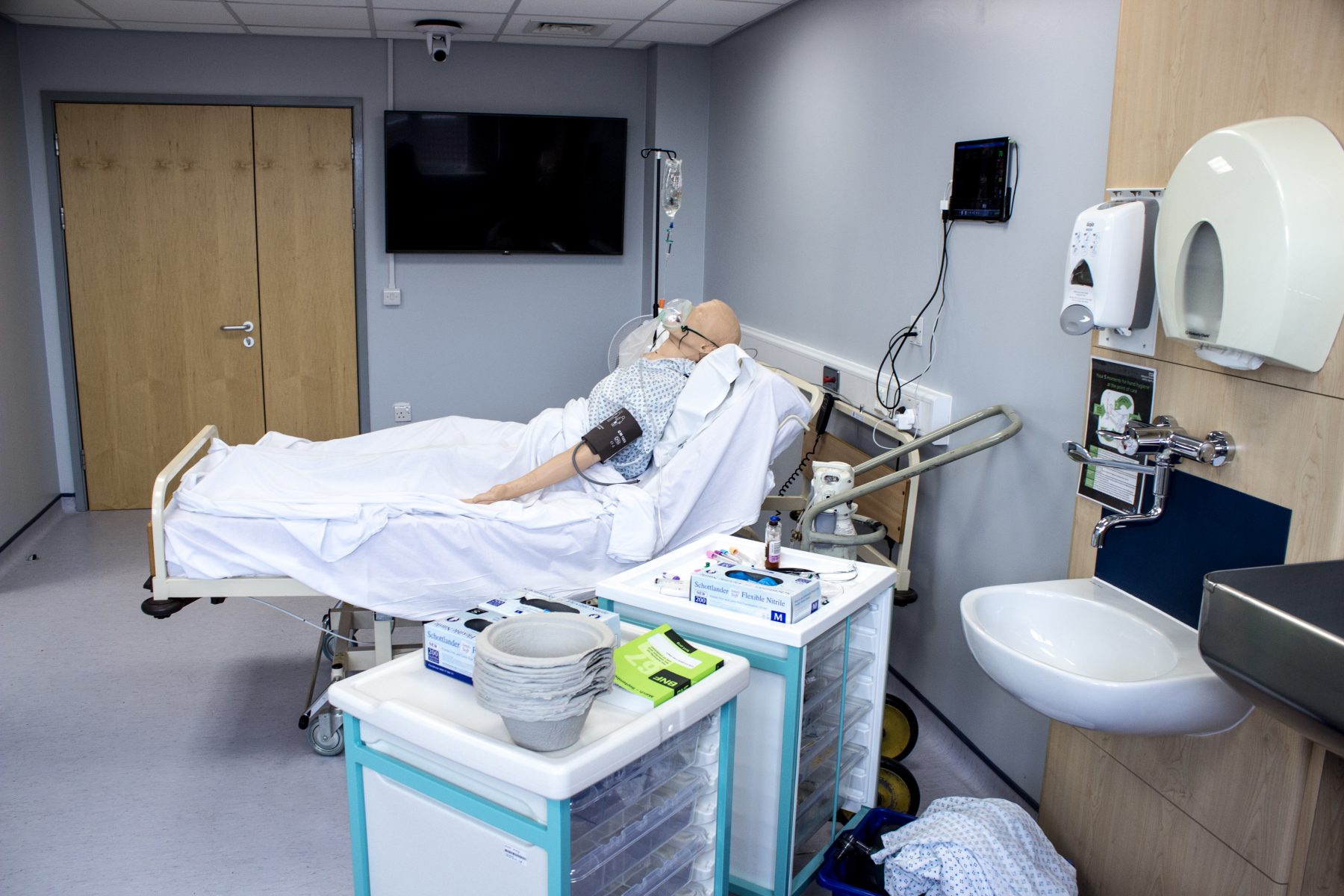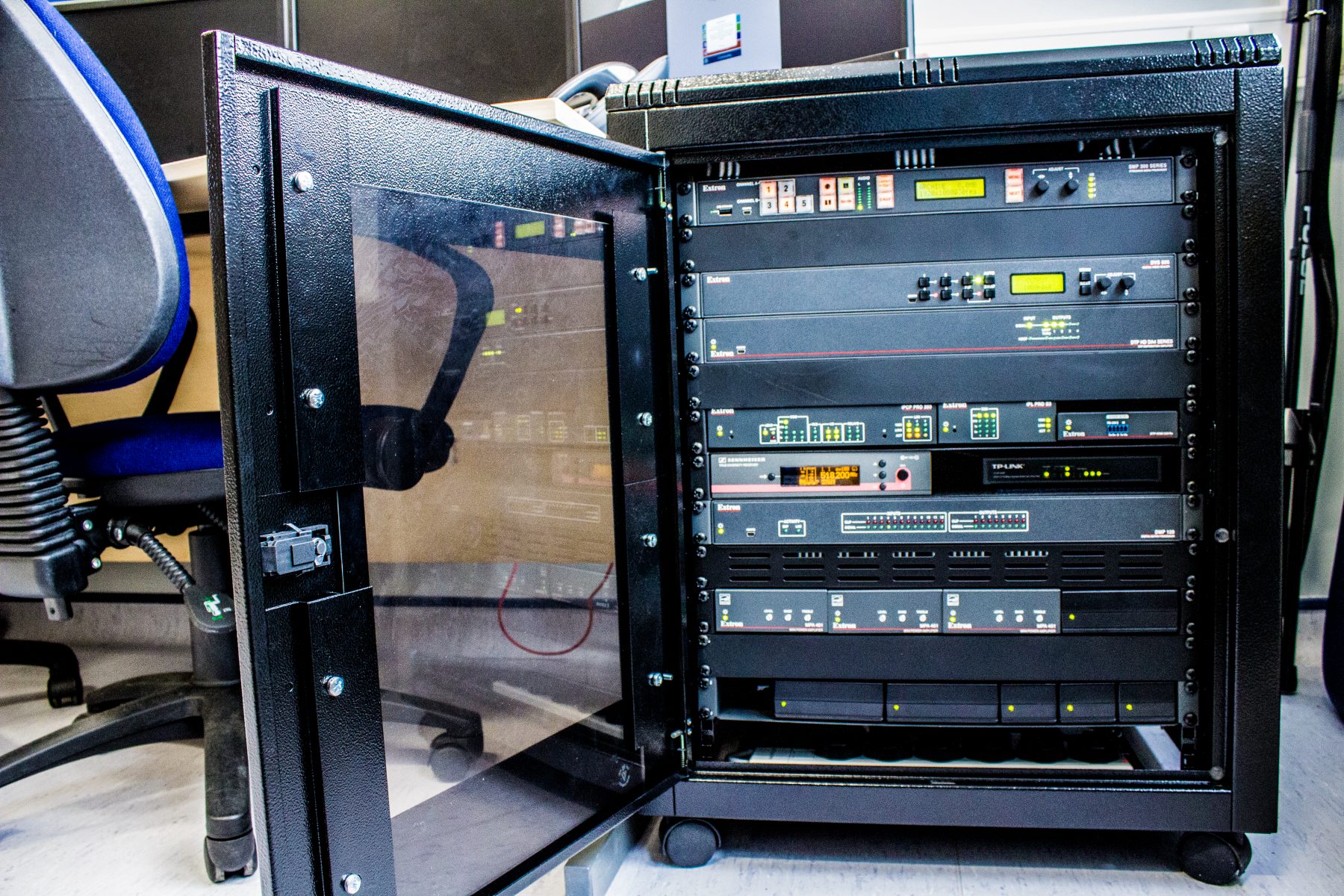Clinical simulation is a hit at Hull York Medical School




Client: Hull York Medical School
Project: Simulation Suite
Project Type: A clinical teaching audio visual installation
Project Description
5th Year medical students at Hull York Medical School now have the ability to test out medical scenarios in a custom developed simulation suite. The multidisciplinary teaching facility recently installed by AV2000 ltd, is used to enhance the students’ practical skills training and give them the opportunity to test their medical skills in simulated ‘real life’ ward scenarios.
The simulation suite at Hull York Medical School comprises of a fully functioning medical ward complete with simulated patient; SimMan 3G. SimMan 3G is an advanced patient simulator that can display neurological symptoms as well as physiological. It is simple to operate and features innovative technology such as automatic drug recognition.
The ward is set up to provide the students with a real life medical setting in which the Lecturers can then simulate different medical scenarios and the students can use their medical knowledge to treat and find solutions.
AV2000 worked with Stuart Wall, AV Technical Officer at Hull York Medical School to design a permanent fixed installation that facilitated teaching and learning within a simulation environment. The installation comprised of two rooms; one ward and a recording and viewing suite.
The ward was rigged with cameras so that the lecturers and students could view what was happening on the ward in a specially created viewing room. The viewing room was installed with recording equipment so that the simulation activity could be captured for review with the students to aid in learning.
The purpose of the simulation suite is to see how the medical students react to a patient. The cameras and recording equipment allow for feedback to be provided and student reflection on their performance and ability to react in the different scenarios.
To achieve this AV2000 mounted a HD camera to the ceiling with high quality digital pan, tilt and zoom which could be controlled remotely over the network. A ceiling microphone picks up the audio in the room. Images and audio are fed from the room to two LCD screens in two different rooms.
“As Clinical Teaching Fellows at the Hull York Medical School, part of our role is teaching regular simulation sessions to final year medical students which focus on patient assessment and treatment in medical emergencies.
One student undertakes the simulation scenario with the entire scenario being controlled in the adjoining room, and the other medical students being able to watch the scenario in the room next to the control room.
Having the ability to watch the simulation sessions remotely ensures that the student undertaking the scenario can perform as they normally would with minimal interruptions or distractions from their colleagues.
It also ensures that the scenarios remain as close to real life as possible, making this a much more valuable learning experience for the students and meaning that it is easier for them to translate the skills learned into clinical practice.
The ability to keep an eye on the scenario closely in the control room also allows adjustments to be made quickly if extra support is needed.
Another real advantage of the installation is that it is a much less passive experience for the students who are not undertaking the scenario. They are able to have discussions, consider their colleagues performance and produce their own learning objectives whilst watching the scenario, ensuring that the whole group learns from every scenario without any direct impact on the scenario or student performing the assessment.
This also helps to facilitate discussions and debriefing after the scenario is over.” Alexandra Macnamara, Clinical Teaching Fellow, Hull York Medical School


